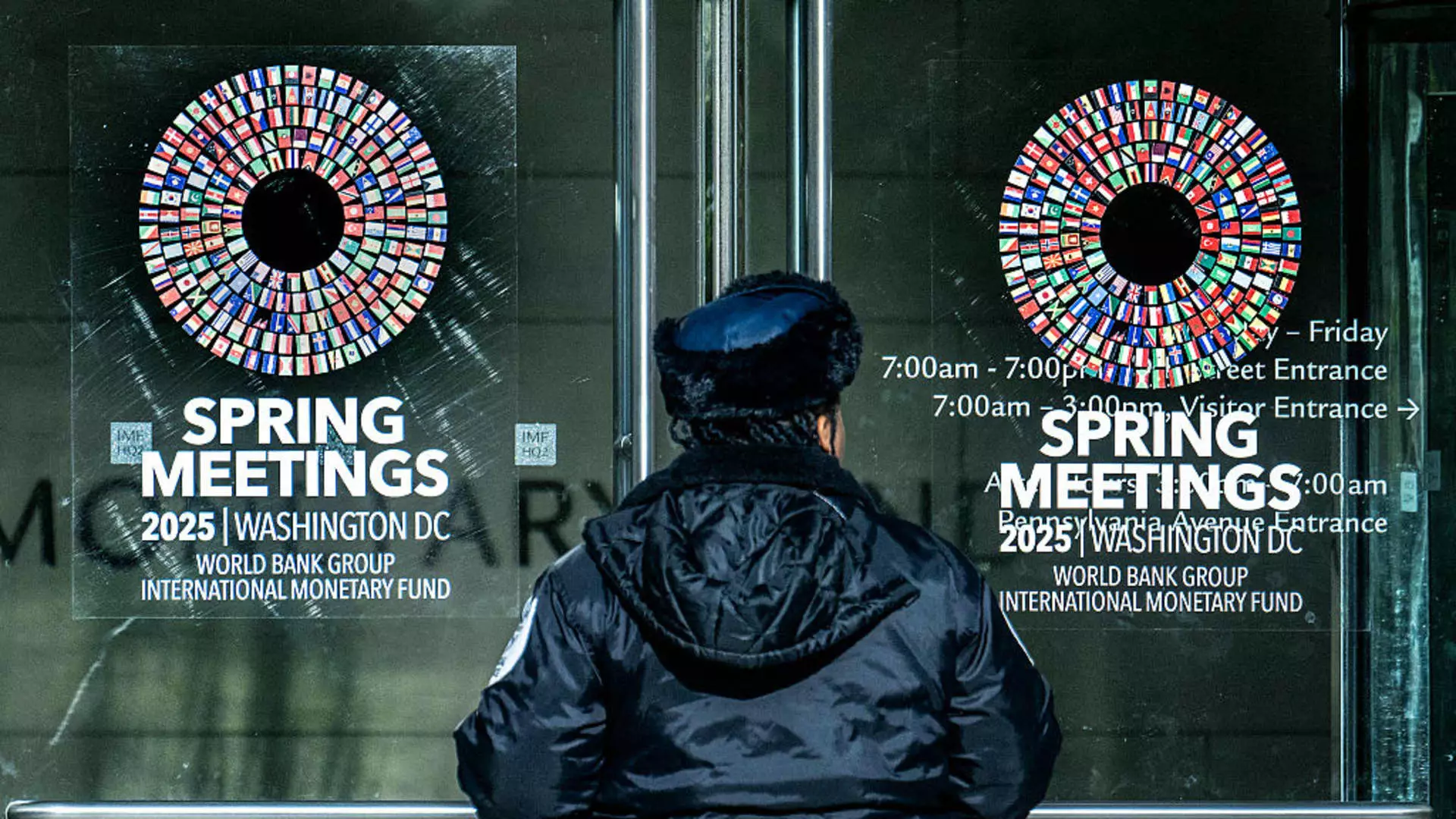The shadows of uncertainty loom over Asia as the International Monetary Fund (IMF) reveals its latest growth forecasts, presenting a sobering picture for the region’s economic giants, China and India. The IMF’s downgrade of GDP expectations for 2025 from previous estimates underscores the severity of trade tensions and the rampant policy unpredictability that have come to define the current geopolitical climate. Growth predictions for China have been slashed to a mere 4%, while India is projected to expand at 6.2%. Both figures fall significantly short of prior estimates, epitomizing an overarching trend of economic stagnation fueled by rising tariffs and diplomatic standoffs.
This alarming downgrade serves as a clarion call for policymakers and economists alike. The global economy is experiencing a tremor, with projections for worldwide growth decreasing from 3.3% to 2.8%, reflecting an era marked by conflict between superpowers. Tariffs, particularly those imposed by the United States, are not merely numbers on a spreadsheet; they represent a shift in trade relationships, escalating tensions, and growing fears for the future.
China and India: From Growth Engines to Stalled Motors
China’s official GDP growth target of “around 5%” seems like an optimistic mirage when juxtaposed against the IMF’s stark figure of 4%. Meanwhile, India, once touted as a regional powerhouse, is now grappling with an uncertain future. The revised forecast of 6.2% for India not only marks a decrease from 6.5% but reflects broader concerns over shrinking markets and diminishing consumer confidence driven by international friction.
The IMF’s report highlights a dangerous trend: as the trade war rages on, economic forecasts become more pessimistic. Goldman Sachs and Natixis have similarly downgraded their projections for Chinese GDP growth, suggesting a synchronized pessimism that reflects broader economic malaise.
The contrast is striking: while China and India struggle to maintain their growth momentum, Japan lumbers along with an even bleaker 0.6% growth expectation. Historically, Japan featured as an economic powerhouse in Asia. Today, it stands as a cautionary tale of stagnation, battling its own economic woes while striving to remain relevant in the face of mounting international uncertainties.
Tariffs and Tensions: A Recipe for Disaster
The political theatrics continue as the United States, under the Trump administration, implements a series of escalating tariffs that have spurred retaliatory measures from China. What began as seemingly isolated actions soon transformed into a sprawling web of economic tumult impacting several countries and industries. U.S. tariffs on Chinese goods have reached alarming levels—245% for certain items—spelling disaster for international trade and setting the stage for a prolonged economic battle.
Japan and India’s attempts at diplomacy appear as navigational lights in a stormy sea. The Japanese trade delegation, sent to engage U.S. counterparts, returned empty-handed, demonstrating the futility of negotiations in the face of rigid policy. Prime Minister Narendra Modi’s conciliatory meetings with U.S. Vice President JD Vance reflect India’s urgent need to forge a path to mutual benefit, yet, the uncertainty remains palpable.
The aggressive stance taken by the Trump administration, combined with its erratic policy shifts, creates a climate of fear and hesitation, pushing global actors to reevaluate their investment strategies and economic plans. The underlying irony is perhaps that in seeking to protect American interests, these aggressive moves have resulted in widespread global repercussions, ultimately diminishing prospects for growth not only within Asia but across the world.
The Human Element: Struggling Economies and Their People
The economic forecasts are not merely academic; they carry real-world consequences for millions. Workers in industries reliant on exports are at risk, facing layoffs and instability as companies reevaluate their positioning in the global marketplace. The ramifications of economic policy extend beyond GDP figures; they seep into the everyday lives of citizens, affecting job security, wages, and consumer confidence.
As the competitive landscape shifts and nationalistic policies take root, the need for thoughtful, center-wing liberal approaches is more critical than ever. Promoting collaboration, fostering dialogue, and establishing mutual respect in economic relations should be the priority, yet the current climate only seems to deepen divides.
In a moment where economic stability is paramount, the international community must come together to address these pressing issues rather than allowing tariffs and trade wars to dictate future trajectories. The stakes are high, and the economic scars from this conflict may linger for years to come.


Leave a Reply